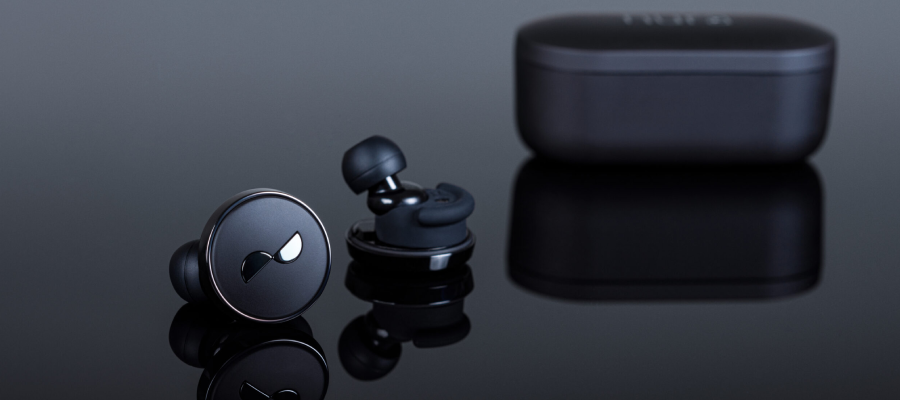
We hear the term ‘spatial audio’ being used a lot in in the tech world. It’s also sometimes referred to as ‘3D audio’, or ‘immersive audio’. It can get quite confusing, especially when there are two technologies which could both be referred to by any of these terms.
As these technologies are relatively new, there are not definitive definitions in place. I am going to try to break these apart. For arguments sake, lets call them 3D Audio A and B.
3D Audio A is for the object based audio codec side of things. For example, players such as Dolby and DTS are in this space (to name a few). This is software which uses metadata to place sound around the listener and then decodes to enabled devices.
3D Audio B is for post-processing, such as head tracking which allows the user to move their head and the sound source remains fixed to a point. This is applicable to headphones and earbuds use cases which have accelerometers to enable the feature.
The NuraTrue Pro earbuds offer Dirac Virtuo Spatial Audio. In my opinion, this would count as post processing (3D Audio B) as users can experience the feature from a stereo source, eliminating the requirement for an object-based audio codec.
Where it gets confusing is that other companies such as Apple have branded their ‘3D Audio B’— which encapsulates head-tracking—as Spatial Audio. It’s not the same spatial audio as Dirac’s Virtuo Spatial Audio.
Research has told us that users would pay more for a spatial audio feature – but do they understand what the feature is?
The original article is here.
SAR Insight and Consulting is the custom research & consulting division of Sensian Research Ltd. and a sister company of DATAportl. All analyst insight provided by either DATAportl or SAR Insight & Consulting remains the intellectual property of Sensian Research Ltd.

